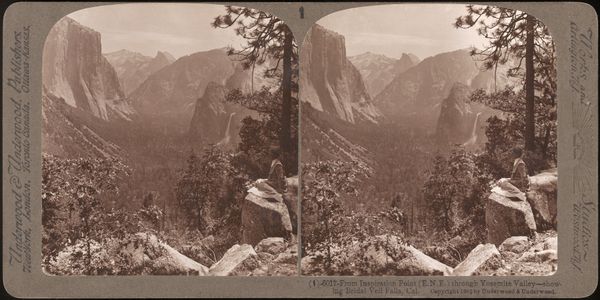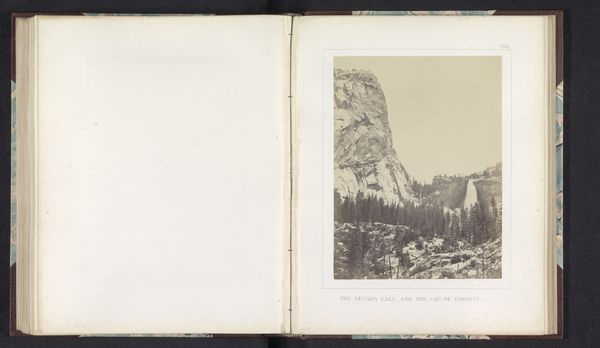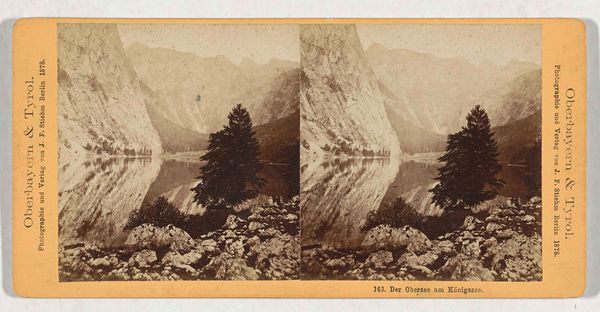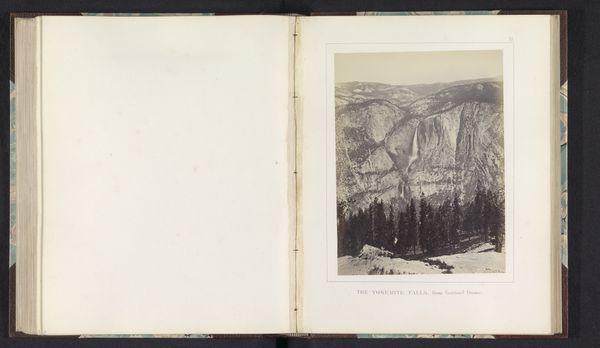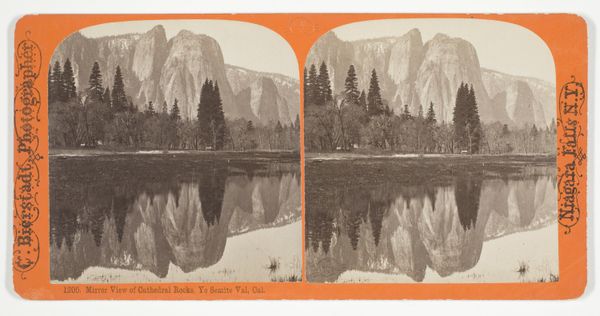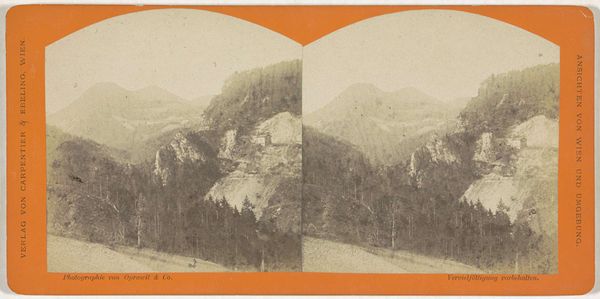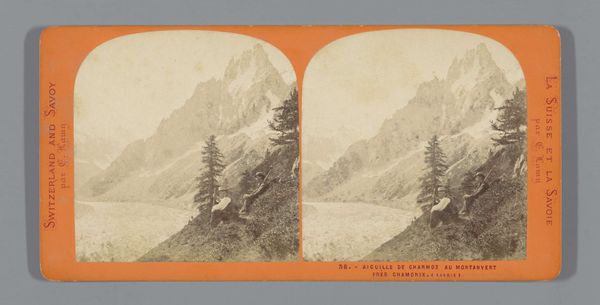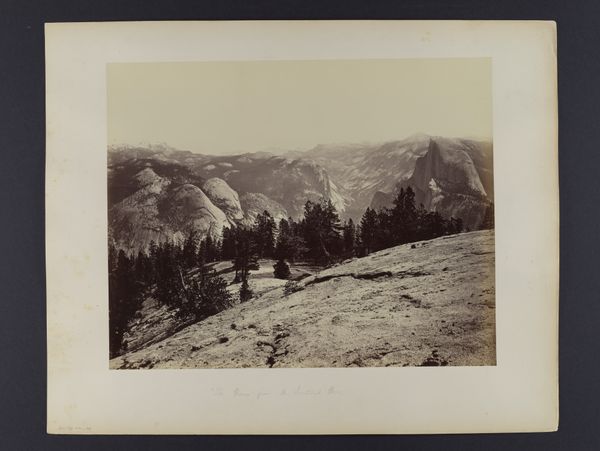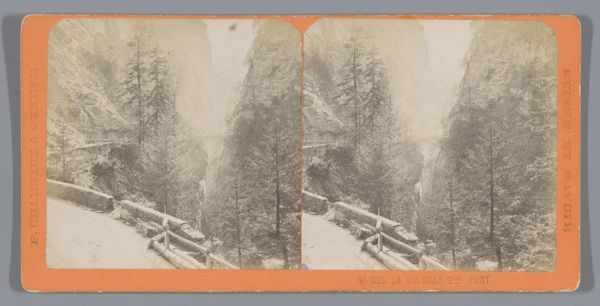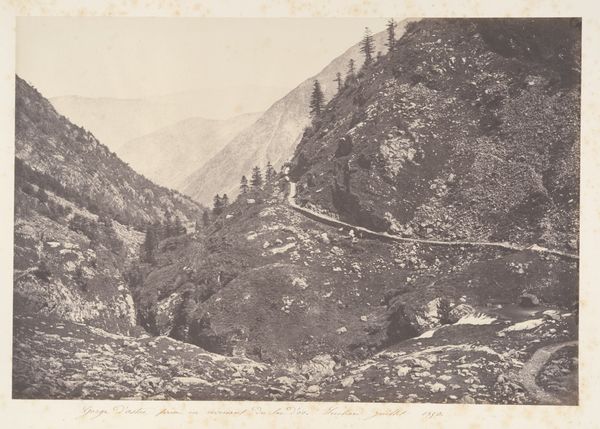
print, photography, albumen-print
#
16_19th-century
# print
#
landscape
#
photography
#
albumen-print
Dimensions: 8.1 × 7.6 cm (each image); 8.7 × 17.7 cm (card)
Copyright: Public Domain
Curator: Before us, we have "Yo-semite Valley, from the South Dome," a stereo albumen print made circa 1868 by Thomas Houseworth. Editor: There’s a stillness to this view, almost meditative. The light is subdued, casting long shadows across the rock face. It feels remote and untamed, which makes sense. Curator: Indeed. The albumen print process, which was particularly popular during that era, required coating paper with egg whites and then using silver nitrate to create a light-sensitive surface. What that results in, as we can see, is an image with remarkable detail and tonal range. The physical cards like this would be mass-produced and then sold to tourists who visited the West. Editor: Tourism. This is one of the first spaces being transformed into an image consumed by a broad audience. And even as Houseworth attempts to deliver authenticity, what perspectives are being missed? Where are the Indigenous voices, their relationships with this place long before colonial incursion? How complicit is photography in the narrative of ownership that served the ideology of Manifest Destiny? Curator: That’s an important point. It is interesting to note how the very act of photographing and distributing these images also had implications on the access, appropriation, and preservation of a landscape transformed. Editor: I’m thinking too about accessibility. The very production of art like this allowed more viewers who might otherwise not visit a place to still have a view and potentially take their own individual stance towards this space in the American landscape. Curator: We must recognize these nuances inherent in nineteenth-century landscape photography. How industrial processes, techniques, distribution networks, and even the simple act of viewing intersected to frame our understanding and experience of spaces such as Yosemite Valley. It’s about labor, trade, capital investment and circulation. Editor: Looking at this image today allows me to meditate upon some uncomfortable truths: The way we create monuments, commodify nature, and whose voices remain unseen. I’m appreciative that it leaves us with a view but invites us to contemplate what other histories might accompany this landscape. Curator: I find myself admiring the technical prowess that made possible an image which so powerfully represents the complexities of American history itself.
Comments
No comments
Be the first to comment and join the conversation on the ultimate creative platform.
